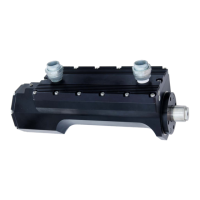SD-6029, Rev 2
WARNING – This information contains technical data
subject to the EAR: ECCN: EAR99
Page 7 of 50
Recommended installation process
Users must determine if it is best to couple the ACT1000/ACT1000HF to the load before or
after the installation has been tested.
• Review general specifications such as load and stroke length
• Mechanically connect the clevis or flange of the ACT1000/ACT1000HF
• Mechanically connect the extension rod of the ACT1000/ACT1000HF
• Connect case ground of the ACT1000/ACT1000HF to system ground
• Connect the power wires of the ACT1000/ACT1000HF to the power supply or battery
system
• Connect the signal wires of the ACT1000/ACT1000HF to the controller
• Test the installation
Electrical noise guidelines
To reduce electrical noise, the ACT1000/ACT1000HF design has routed wires carrying high
voltage separately from those carrying low voltage signals via separate conduits.
An additional measure to reduce electrical noise is to ensure that the ACT1000/ACT1000HF
is properly grounded, as per Section 1.4 of this manual.
Environmental considerations
The ACT1000/ACT1000HF operates satisfactorily in an ambient air temperature from -40°C
(-40°F) to +93°C (+200°F) and is designed as an explosion-proof assembly. The
ACT1000/ACT1000HF enclosure is rated for dust and water ingress to Canadian Standards
Association (CSA) Type 4 and IEC IP66.

